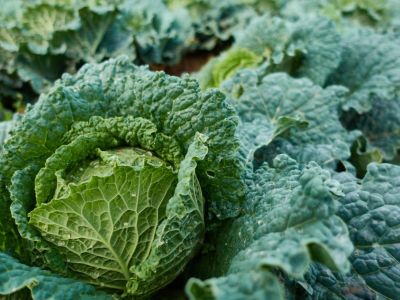What is Savoy Cabbage?
Savoy cabbage belongs in the Brassica genus along with broccoli and Brussels sprouts. This low calorie veggie is used both fresh and cooked and is high in potassium and other minerals and vitamins A, K and C. The most obvious difference between common green cabbage and savoy is its appearance. It has multi-hued shades of green foliage that is typically tighter at the center, gradually unfurling to reveal curly, puckered leaves. The center of the cabbage looks a bit brain-like with raised veins running throughout. Although the leaves look like they might be tough, the wonderful appeal of savoy leaves is that they are remarkably tender even when raw. This makes them perfect for use in fresh salads, as vegetable wraps or as a bed for fish, rice and other entrees. And they make even tastier coleslaw than their green cousin. The leaves are milder and sweeter than those of green cabbage. Intrigued? Then I bet you are wondering how to grow savoy cabbage.
How to Grow Savoy Cabbage
Growing savoy cabbage is similar to growing any other cabbage. Both are cold hardy, but savoy is by far the most cold hardy of the cabbages. Plan to set out new plants in the spring early enough so they can mature before the heat of summer. Sow seeds 4 weeks before the last frost for plants to be transplanted in June and plant fall cabbage 6-8 weeks before the first frost of your area. Allow the plants to harden and acclimate to the colder temps before transplanting. Transplant the savoy, allowing 2 feet (.6 m.) between rows and 15-18 inches (38-46 cm.) between plants in a site with at least 6 hours of sun. The soil should have a pH of between 6.5 and 6.8, be moist, well-draining and rich in organic matter for the most optimal conditions when growing savoy cabbage. If you start with these requirements, caring for savoy cabbage is fairly labor free. When caring for savoy cabbage, it’s a good idea to mulch with compost, finely ground leaves or bark to keep the soil cool, moist and low on weeds. Keep the plants consistently moist so they don’t stress out; apply 1- 1 ½ inches (2.5-3.8 cm.) of water per week depending upon rainfall. Fertilize the plants with a liquid fertilizer, such as fish emulsion, or 20-20-20 once they develop new leaves, and again when the heads begin to form. Follow these instructions and you will be eating delicious Brassica oleracea bullata sabauda (say that a few times really fast!) either fresh or cooked. Oh, and the good news about cooked savoy cabbage, it lacks the unpleasant sulfur odor that other cabbages have when cooked.
